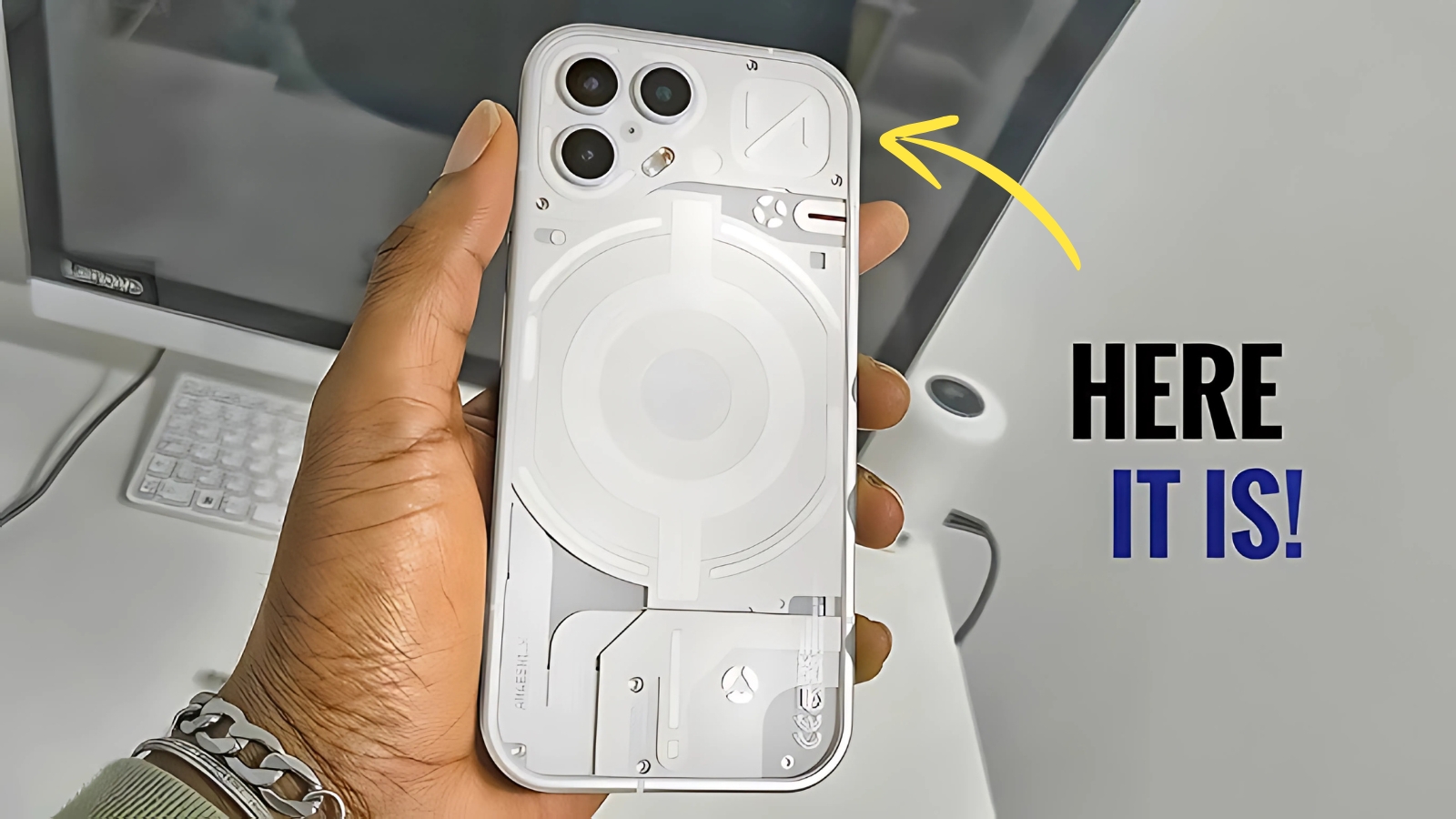Nothing Phone 3: The technology world witnessed a pivotal moment as Nothing officially unveiled its most expensive and feature-rich smartphone yet—the Nothing Phone 3. Priced at $799 in the US, with availability on Nothing’s website and Amazon, this device represents a significant departure from the company’s budget-friendly origins while maintaining the distinctive design philosophy that made the brand famous.
Design Revolution Through Glyph Matrix Innovation
The standout transformation lies in Nothing’s complete reimagining of its signature Glyph Interface. The Glyph Matrix is a circular 25×25 pixel matrix display with micro-LED clusters on the top right corner of the Nothing Phone (3)’s back, replacing the LED strip lighting system that previously defined the brand’s aesthetic identity.
This isn’t merely a cosmetic change—the engineering achievement behind the Glyph Matrix represents months of development work. Made up of 489 micro LEDs, the Matrix can do things like provide information without looking at or unlocking the main screen, such as caller ID. The system offers functionality that extends far beyond simple notifications, incorporating interactive elements that transform how users engage with their devices.
The Matrix system introduces what Nothing calls “Glyph Toys”—miniature applications that run directly on the rear display. These include practical tools like a digital clock, stopwatch, battery level indicator, and compass, alongside entertainment options such as spin the bottle and rock-paper-scissors games.

Technical Specifications Meet Premium Expectations
The device is powered by Snapdragon 8s Gen 4 with 12GB or 16GB of RAM and 256GB or 512GB of storage, positioning it firmly within flagship territory despite some industry criticism about the processor choice. While competitors opt for the more powerful Snapdragon 8 Gen 4, Nothing’s decision reflects a focus on power efficiency and thermal management rather than raw performance benchmarks.
There’s a 6.67-inch AMOLED display at 2800×1260 which Nothing calls “1.5K resolution.” The panel is 120Hz and hits 4,500 nits of peak brightness while using Gorilla Glass 7i on the front, and Victus on the back. These specifications demonstrate Nothing’s commitment to delivering premium visual experiences that compete directly with established flagship devices.
Photography Capabilities Receive Comprehensive Upgrades
The camera system represents another area where Nothing has invested heavily in flagship-level capabilities. The cameras include four 50MP sensors in total. There’s a main rear camera, 3x telephoto lens which can double for macro photography, as well as an ultrawide lens. The front-facing sensor is also 50MP, and all four can shoot in 4K with 60fps video.
This comprehensive camera setup addresses previous criticisms about Nothing devices lacking photographic prowess, bringing the Phone 3 in line with photography-focused flagships from established manufacturers.
AI Integration Reflects Industry Trends
Nothing has embraced artificial intelligence features that have become standard across premium smartphones. This includes Essential Search, Nothing’s take on global search that lets users search for apps, files, photos and more using natural language prompts, competing directly with similar functionality found on Google Pixel and Samsung Galaxy devices.
The AI integration extends to practical productivity features, including meeting transcription and summarization capabilities accessed through the dedicated Essential Key hardware button. These features demonstrate Nothing’s evolution from a design-focused startup to a comprehensive smartphone manufacturer addressing enterprise and productivity use cases.
Battery Technology Advances Despite Design Constraints
Under the hood there’s a 5,150 mAh battery (5,500 in India) using silicon-carbide tech. Nothing says charging hits 65W over USB-C while wireless charging (no Qi2) is at 15W. The battery capacity represents a reasonable balance between device thickness and power requirements, particularly considering the additional power demands of the Glyph Matrix system.
The silicon-carbide technology represents an advancement in battery chemistry that improves energy density while maintaining safety standards, allowing Nothing to pack more capacity into the same physical space.
Software Support Promises Long-Term Value
Android 15 with Nothing OS 3.5 powers the experience with 5 years of major Android updates and 7 years of security updates, establishing the Phone 3 as Nothing’s longest-supported device to date. This commitment addresses previous concerns about the company’s long-term software support capabilities and provides users with confidence in their investment.
The extended support timeline places Nothing in competition with Google’s Pixel devices and Samsung’s flagship Galaxy series, both of which offer similar long-term update commitments.
Market Reception and Competitive Positioning
Nothing Phone 3 5G price in India starts from ₹79,999, representing a significant price increase over previous Nothing devices. This pricing strategy reflects the company’s transition from budget-friendly alternatives to premium flagship competitors, though it has generated mixed reactions from longtime Nothing enthusiasts.
Early hands-on impressions suggest that while the Glyph Matrix provides genuine utility, My first impression is that it’s a little more restrained than the light show of the Glyph Interface on previous phones. This measured approach may help Nothing appeal to users who found previous Glyph implementations too flashy or distracting.
REDMAGIC 10S Pro launch with 512 GB storage smartphone – look is elegant
Global Availability and Market Strategy
Pre-orders will open on July 4 with availability starting on July 15, marking Nothing’s most ambitious global launch strategy. The company is making the Phone 3 widely available through major retailers and carriers, representing a significant expansion from previous limited availability programs.
This broader distribution strategy suggests Nothing’s confidence in the Phone 3’s mass-market appeal and its readiness to compete directly with established smartphone manufacturers across multiple price segments.
Nothing Phone 3 Industry Impact and Future Implications
The Nothing Phone 3 represents more than just another smartphone launch—it demonstrates how newer manufacturers can differentiate themselves in an increasingly commoditized market. The Glyph Matrix system, while polarizing among existing fans, provides genuinely unique functionality that established manufacturers have yet to replicate.
Whether this innovation-focused approach can sustain Nothing’s growth in the competitive premium smartphone segment remains to be seen, but the Phone 3 establishes the company as a serious contender willing to challenge conventional smartphone design assumptions. For consumers, this competition means more choices and potentially more innovation as established brands respond to Nothing’s creative approaches to smartphone interaction and design.
